How to Clean Plastic Cutting Boards Effectively

How I Tested the Different Methods
I made a quick paste with turmeric and water and smeared it around five different cutting boards. (I’d used this mixture once as a natural dye for fabric and noted how quickly the beautiful color transferred (read: stained) any surface it came into contact with.) This was my control for each cutting board.
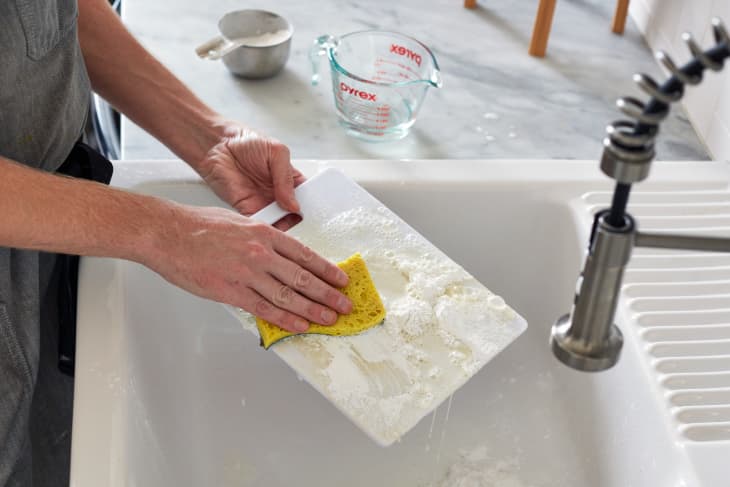
Cutting Board Cleaning Method: Baking powder and white vinegar
- Total time: 10 minutes
- Rating: 1/5
The method: Mix equal parts baking powder and white vinegar into a paste. Spread the paste over the stain and let it sit for at least 5 minutes. Then, wash with water and a soapy sponge.
Here’s what happened: I was interested to find out why one might use baking powder instead of baking soda for cleaning, and was surprised to learn that baking powder is basically baking soda with an acid ingredient. I’ve cleaned many things with the trusty baking soda/vinegar combo, so I had high hopes, but this method gave me zero results.
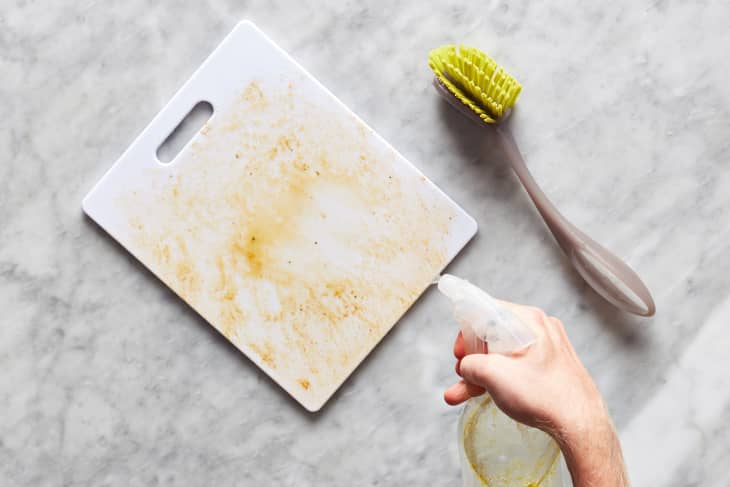
Cutting Board Cleaning Method: Essential oil, vinegar, and water
- Total time: 5 minutes
- Rating: 2/5
The method: In a spray bottle, combine 1 cup water, 1/2 cup distilled white vinegar, and 5 to 8 drops of good-quality essential oil (I used Thieves oil). Shake, spray the solution over the entire board, then scrub with a stiff-bristle brush. Wash clean with dish detergent.
How it went: It took me longer to combine all the ingredients than it did to figure out that this method wasn’t going to work. After spraying the entire board, I began to work the mixture around with a stiff-bristle brush — but nothing was happening. Once I added dish soap, I could see bits of turmeric turning the soap bubbles yellow. As far as disinfecting goes, this mixture is a good alternative to bleach, but it won’t cut the mustard when it comes to stains.
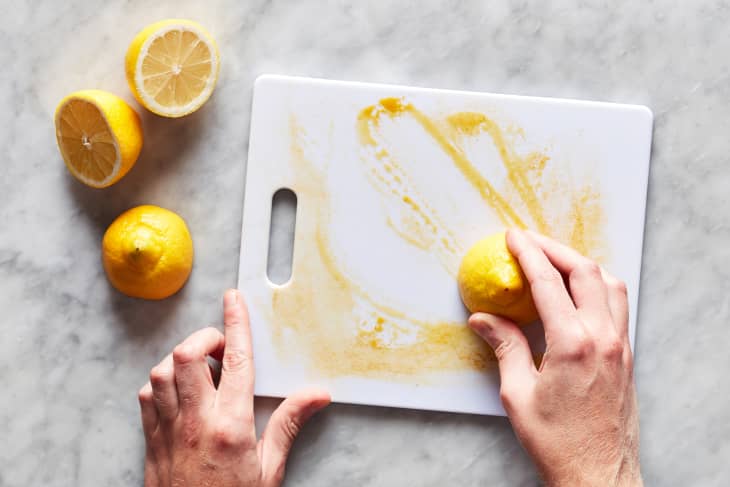
Cutting Board Cleaning Method: Lemon and sunshine
- Total time: One day
- Rating: 3/5
The method: Cut a lemon in half, then squeeze the juice out as you rub it all around the stained cutting board. Then set the board outside and let it sit in the sun for the entire day.
How it went: The stain lifted somewhat, but was still very visible. I can imagine if you were to repeat this process and leave the cutting board in the sun for a few days at a time, you’d get much better results because the sun is actually a great bleaching agent. I don’t recommend this method if you’re looking to quickly remove stains from your cutting board, but it’s a great method to use if you have time and don’t want to make much effort!

Cutting Board Cleaning Method: Hydrogen peroxide, baking soda, and dish soap
- Total time: Overnight
- Rating: 4.5/5
The method: In a small bowl, mix 3 to 4 tablespoons of baking soda, 1 tablespoon of dish soap (I used Dawn), and 1 to 2 tablespoons of hydrogen peroxide. Spread the mixture over the stain and let it sit overnight. Rinse and scrub with warm, soapy water.
How it went: By morning, the mixture had drawn bits of color from the stain to the surface. I rinsed the mixture off with warm water and was pleased to see that the stain had lightened significantly. Once I used dish soap for a general cleaning, even more of the stain came up. It didn’t come up completely, but was definitely an impressively effective method for such a stubborn stain. Honestly, I’d say this method and the next one (below) should tie as the winners.
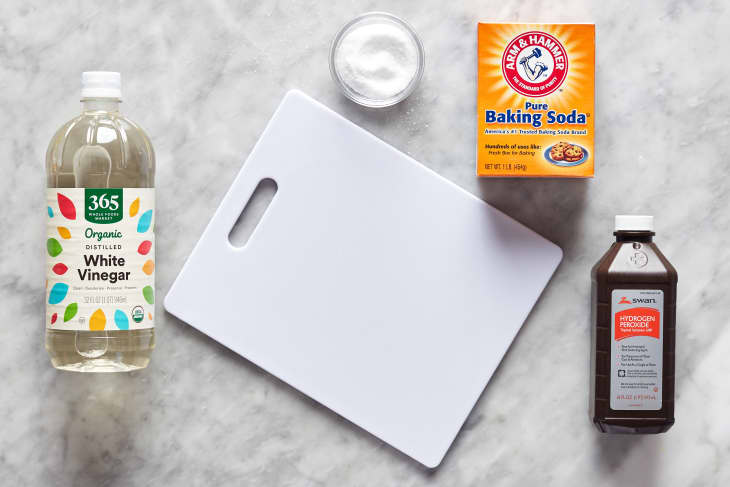
Cutting Board Cleaning Method: Baking soda, salt, vinegar, and hydrogen peroxide
- Total time: 10 minutes
- Rating: 4.5/5
The method: Kitchn has a proven method, which calls for two different steps that can be done anytime. First, soak the board in a white vinegar solution or spray it with a 3% hydrogen peroxide solution. (Either way, let the board sit for at least five minutes before washing it again with soap and water.) Then, make a paste that’s one part baking soda, one part salt, and one part water to scrub out surface stains.

How it went: Yes, this calls for quite a few ingredients, but they’re all things that we’re all likely to have on hand anyway. I actually liked that there were two different steps because you can do the soak or skip the soak, depending on how stained your board is. The scrub mixture ends up being the perfect consistency: thin enough to spread around on the stained cutting board, but not soupy. I usually know what to expect when using baking soda on a stain — it takes a bit of elbow grease, but eventually the stain disappears. I’m happy to report that this took a bit less effort than I had been expecting.
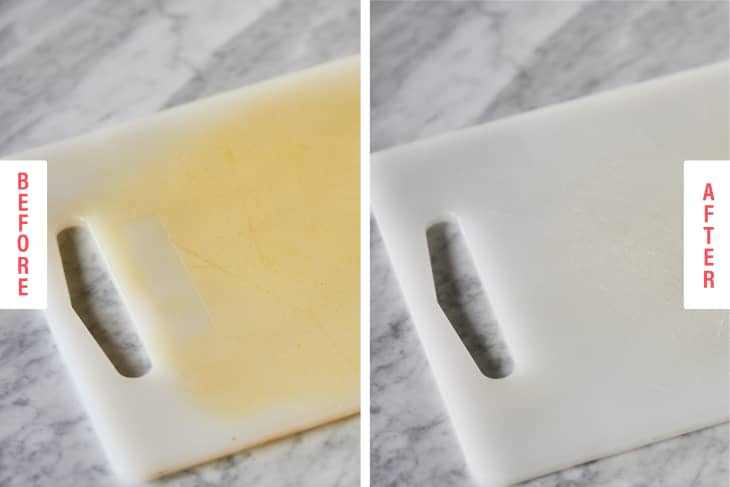
How do you clean your plastic cutting boards when they’re extra stained?



